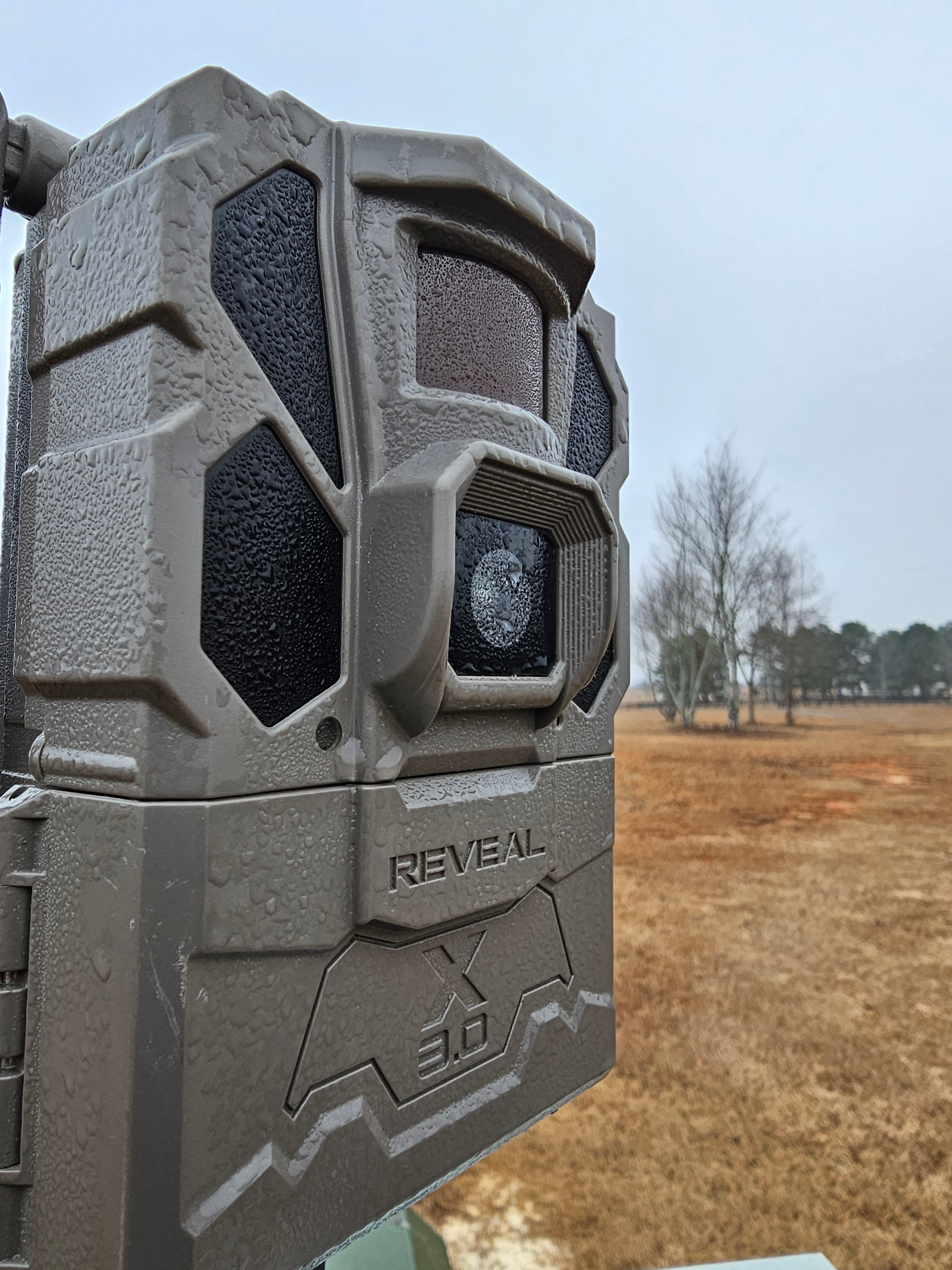If you run trail cameras for very long, you will probably get some foggy pictures even though there is no fog in the area at the time. It also likely happens to that most important piece of intel you’ve been looking for on your target buck. It's frustrating.
Over the years, I have spent a lot of time reading and trying to understand how and why this happens. I’m sharing what I have learned.
Foggy pictures aren’t limited to certain brands or models of cameras. If the fogging is caused by moisture on the outside lens surface, nature and physics are the only things to blame, despite what you may read on Facebook. I run many brands and models of cameras year round and they all experience it.
If the foggy pictures are caused by moisture on the inside of the lens then the camera has a leak. Check for debris in the door gasket and make sure the rubber o-ring under the antenna is intact.
Dew forms on cameras and surfaces due to condensation, when water transitions from vapor to liquid. As temperatures drop and objects cool, dew forms. If the object cools enough, the surrounding air follows suit. Cooler air can't hold as much water vapor as warm air, leading to condensation around cooling objects and the formation of dew on those objects.
The temperature at which dew forms is known as the dew point. It varies depending on location, weather, and time of day. Higher humidity increases the likelihood of dew formation. Dew usually forms at night as temperatures decrease and objects cool, but it can form at any dew point at any time.
I see the topic of foggy pictures discussed in every trail camera group on Facebook fairly often. Many blame the camera. You will find comments with solutions ranging from applying shaving cream, Cat Crap anti-fog, or Rain-X and also adding a shed or lid over the camera. I've tried them all. Nothing works or works well at preventing condensation forming on the camera lens.
When conditions are right, moisture will form on a glass door that is completey covered by a roof. I made a video about this showing a moisture-covered door under an awning. Here’s the link to that video: Dew on glass under an awning
The only solution that would completely eliminate lens condensation would be to have an internal heater that warmed the camera. That would require a lot of battery power. You would need a good power source to run both the cellular camera and the heater. That's just not cost effective or practical for most people and that power source would be very large.
I have noticed that sometimes cameras in the same vicinity as a foggy camera are not foggy. I have no explanation other than at the spot, the conditions for condensation were not met.
Here is a picture of moisture formed on the bottom of the camera.

Here is a bird feeder camera with built in roof over it. The pictures were foggy until the moisture evaporated. 

In summary, if the fogging is from moisture on the exterior of the camera, there really is not much we can do. We are placing these devices in the elements and they are affected by forces we cannot always overcome.
Same morning moisture on a glass light under a roof.

